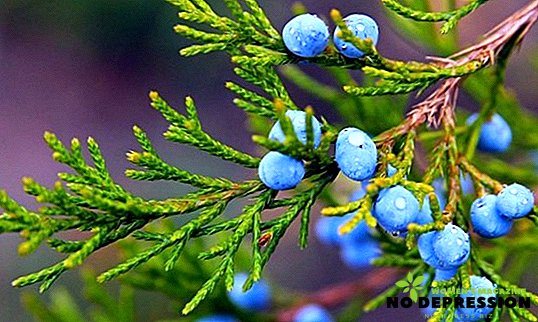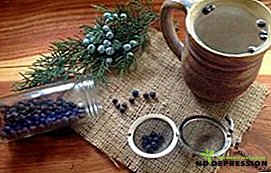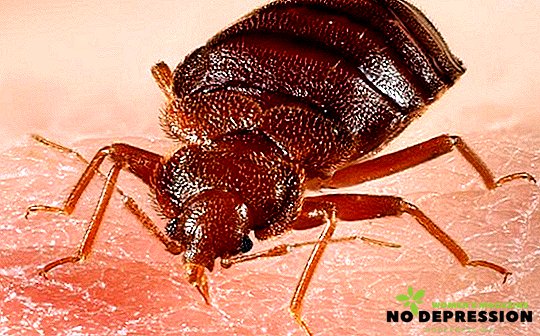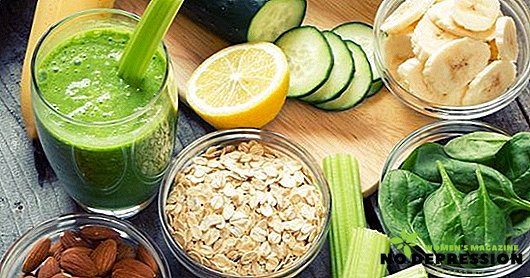All species of juniper are able to fill the air with useful phytoncides and essential oils many times more than other coniferous trees. At the same time, the plant does not like polluted air, and if an evergreen tree grows beautifully in a garden, then the ecology is normal.

Description of plants and places of growth
Evergreen junipers in nature grow in the Northern Hemisphere. In nature, you can find both a multi-stemmed tall tree, and a very low shrub, almost creeping. Of the 60 plant species, 20 grows in Central Asia and the Caucasus.
The appearance of junipers is different. On the plots mainly colonic or pin-shaped trees grow. In large parks can be found juniper Columnaris or Hibernica. The first grows to two meters, and the second to five meters. Juniper Sompressa is used in small gardens, its height does not reach one meter.
Features of the workpiece

Harvesting of juniper berries occurs in the autumn period (August-October), when they fully ripen. When collecting fruits, you will need a large tarpaulin or fabric that is spread under the plant, then the twigs gently shake so that ripe cones of a dark blue shade crumble.
In addition to the fruit still collected needles. The collection of raw materials takes place during the year. Young needles are collected from June to July, and if mature needles are required, they will have to be followed in October. Harvesting needles should be carried out away from the city and a busy highway.
Collected cones are recommended to be sown in natural conditions, and then dried under a shed or in a well-ventilated attic. In order to have better air exchange, it is necessary to decompose the raw materials into grids. Properly dried juniper fruits have a pine aroma, dark color, rounded shape.
It is not recommended to use ovens and electric dryers for drying. High temperatures will lead to the loss of bioactive substances, which will affect the quality of medicinal raw materials.
Main varieties
Of great importance are several varieties of juniper. Among them are ordinary, Daurian, Cossack and Siberian.
Ordinary

A small tree up to three meters high or a large shrub. The trunk covers the flaky bark of gray. Needle leaves are connected by a whorl of three things. Flowering plant in summer (June). The fruit is a green berry, having an ovoid shape in the first year, and in the second - a dark blue, brilliant berry takes the form of a ball. Its size reaches 9 mm. Grows in coniferous forests on soil with high or moderate humidity.
Daursky and Siberian

Daur juniper is much less common than other species. Only in some areas of the Khabarovsk Territory can it be seen in solitary form or in small groups. It grows on rocks, stony slopes. Siberian juniper - shrub up to one meter tall, densely branched, baskets of leaves as close as possible. His needles are short, wide enough, well pressed to the branches. Cones are large, have a bright gray color.
Cossack

A widespread species of juniper, has very thin twigs. The bark of the shrub is reddish, the leaves have a rhombic shape, tightly adjacent to each other and twigs. Fruits are oval-shaped, up to 7 mm in diameter, with a characteristic blue shade. Special care must be taken with this plant, as it contains a poisonous substance. Even minimal doses in the body will cause vomiting, diarrhea, and large amounts will lead to loss of consciousness, seizures.
Composition and medicinal properties
In the places where juniper grows, the air is particularly clean and curative, and this is explained by the fact that the tree produces beneficial phytoncides. To relax, relieve anxiety, muscle pain, improve sleep, just breathe useful coniferous air. In medicine, they use pine needles, dried fruits and bark in the form of tincture, decoction, infusion.
 What is in the composition:
What is in the composition:
- organic acids;
- vitamin C (ascorbic acid);
- essential oils;
- fatty oil;
- trace elements (copper, manganese, aluminum, iron);
- tannins.
As improving digestion, disinfecting, stone-dissolving, analgesic, anti-inflammatory, choleretic, diaphoretic, expectorant, and diuretic, they use juniper with stones in the kidneys and gall bladder, to relieve inflammation in gout and rheumatism, in case of a cold, as a rash, and if they get sick with chills and gall bladders; for the treatment of skin and stomach, with nervous tension.
How to apply juniper at home
At home, use ripe berries, pine needles as raw material for therapeutic tinctures, decoctions, infusions. In addition, drugs with juniper can be purchased without a prescription at any pharmacy.
Pharmaceutical preparations
The drug number 1 - essential oil for internal and external use. With colds, prescribed one drop per day. Essential oil must be diluted in liquid honey or warm water. Externally, the oil will need for baths, therapeutic massage, pain-relieving compresses.
The drug number 2 - the fruits of juniper. The pharmacy sells berries, packaged in bags (weight 30-50 grams) or boxes of 100 grams. Use the fruit as an antimicrobial, anti-inflammatory and diuretic agent. Of them prepare infusions and medicinal decoctions.
Fresh berry treatment

- To improve blood: you need to eat one berry on an empty stomach every day, gradually increasing the daily intake rate by 1 piece. Bring daily intake to 15 pieces, then reduce the rate to 1. When taking berries, chew well.
- To relieve fatigue: pour a tablespoon of berries in a saucepan with 500 ml of boiling water, close tightly and leave for one hour. Filter the drink through cheesecloth, put lime slices. Drink as usual tea.
- For dermatitis: two hundred grams of fruit pour cold water (1 l), on low heat bring to a boil, continue cooking for 20 minutes. Broth strain. Use before bedtime, taking a bath with decoction. The course of treatment is 10 baths every other day.
Decoction and infusion of juniper
All decoctions with juniper provide invaluable assistance to the stomach and lungs. Infusions help get rid of edema, will benefit from allergic and infectious skin lesions.
- Decoction to normalize digestion, increase appetite and treat upper respiratory tract inflammation: pour a tablespoon of dry berries with a glass of cool water, leave to infuse (1 hour), then bring the broth to a boil, leave under a tight lid (10 minutes). Drink three times a day for a tablespoon.
 Broth with bloating and stomach diseases: 10 fruits pour 200 ml of boiling water, boil over low heat (10 minutes). Cool the broth, strain. Bring to full volume with boiled water. Drink a tablespoon 3 times a day.
Broth with bloating and stomach diseases: 10 fruits pour 200 ml of boiling water, boil over low heat (10 minutes). Cool the broth, strain. Bring to full volume with boiled water. Drink a tablespoon 3 times a day.- Decoction for diabetes: 10 fruits pour a glass of boiling water, send the pan to a small fire, stand for 5 minutes. Insist for half an hour, then strain, drink strictly 3 times a day for 20 ml.
- Infusion for the treatment of stomatitis: a tablespoon of crushed berries pour 200 ml of hot water. When the drink has cooled, it must be drained. It is recommended to rinse the mouth 3 times a day.
- Infusion for removing edema: brew a tablespoon of berries with boiling water (200 ml), leave for 30 minutes. Strain, take a tablespoon 4 times a day.
- Infusion for the treatment of dermatitis, allergic rashes, herpes: pour chilled water with two hundred grams of crushed leaves (needles), infuse for two hours, then boil over low heat (20 minutes). Infusion strain, add to a therapeutic bath (course - 12 procedures).
Tincture
Alcohol tinctures help with inflammation of the skin, promote rapid healing, strengthen hair follicles:
- Tincture for hair and scalp: chop the fruits with a blender (4 tbsp. L.), Steam the prepared powder with boiling water (200 ml), leave for 1 hour, strain through several layers of gauze. Then add glycerin (1 tbsp.), 100 ml of alcohol. Massage movements rub the tincture into the scalp 2 times a day. The course is one month.
- Tincture for rubbing joints: pour one part of the raw material with 20 parts of alcohol. Infuse at room temperature for one week, strain. Rub painful joints 3 times a day. The course is one month.
- Herpes tincture: chop the fruits with a blender, then pour two tablespoons of powder with high-quality vodka so that it completely covers the powder. Insist 14 days, then squeeze out raw materials, strain the vodka infusion. For rashes on the lips, it is recommended to use 2-3 times a day.
Essential oil
From the aromatic needles of the plant get valuable essential oil. It has excellent healing properties: it disinfects, anesthetizes, heals wounds, is an excellent anti-inflammatory and deodorizing agent.
- To enhance immunity: take a drop of essential oil half an hour before meals. You can add oil in yogurt, honey, vegetable oil.
- It will help relieve fatigue: an evening bath with the addition of juniper oil (7 drops) and honey (15 g). Reception time will be 15 minutes.
- For wound healing: combine essential oil (5 drops) with any massage cream. Apply a thin layer to the wound 3 times a day.
Contraindications and possible harm
Fresh berries, infusion, decoctions, tinctures, essential oil provide invaluable assistance to the body for many diseases. But, like any medicinal plant, juniper has contraindications.
You can not take drugs with juniper:
- pregnant women;
- during exacerbation of chronic kidney disease;
- with severe forms of intestinal ulcers and stomach;
- with colitis, gastritis.
Many articles are devoted to the healing properties of juniper, in which modern doctors recommend decoctions, tinctures, tinctures, essential oil as effective means of treating serious diseases.


 Broth with bloating and stomach diseases: 10 fruits pour 200 ml of boiling water, boil over low heat (10 minutes). Cool the broth, strain. Bring to full volume with boiled water. Drink a tablespoon 3 times a day.
Broth with bloating and stomach diseases: 10 fruits pour 200 ml of boiling water, boil over low heat (10 minutes). Cool the broth, strain. Bring to full volume with boiled water. Drink a tablespoon 3 times a day. From the aromatic needles of the plant get valuable essential oil. It has excellent healing properties: it disinfects, anesthetizes, heals wounds, is an excellent anti-inflammatory and deodorizing agent.
From the aromatic needles of the plant get valuable essential oil. It has excellent healing properties: it disinfects, anesthetizes, heals wounds, is an excellent anti-inflammatory and deodorizing agent.









